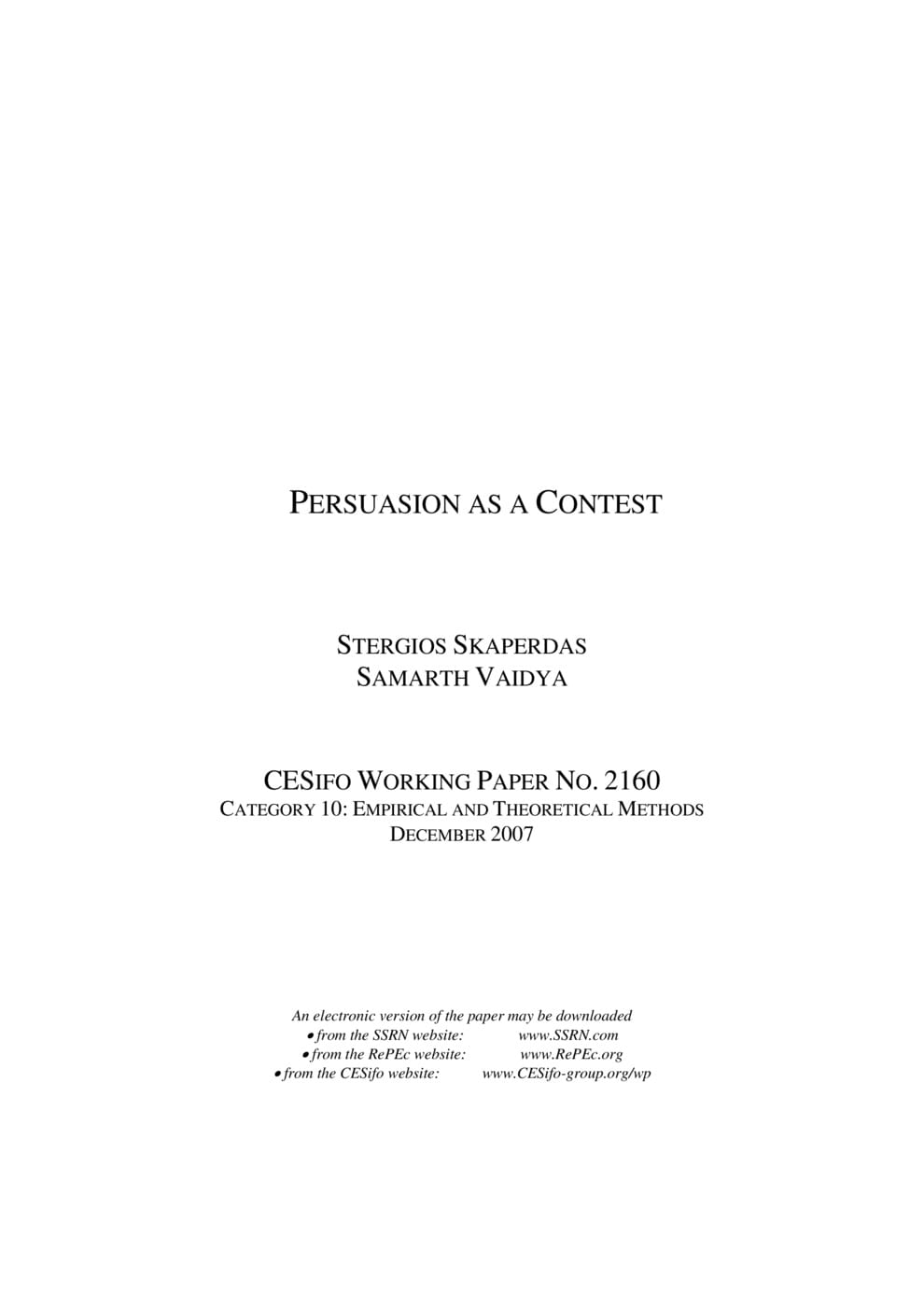Persuasion as a Contest
CESifo, Munich, 2007
CESifo Working Paper No. 2160

From marketing and advertising to political campaigning and court proceedings, contending parties expend resources to persuade an audience of the correctness of their view. We examine how the probability of persuading the audience depends on the resources expended by the parties, so that persuasion can be modelled as a contest. We use a Bayesian approach whereby the audience makes inferences solely based on the evidence presented to them. The evidence is produced by the resources expended by the contending parties. We find conditions on evidence production and likelihood functions that yield the well-known additive contest success functions, including the logit function as well as the one used in all-pay auctions. We also find conditions that produce a “difference” functional form. In all cases, there are three main determinants of which side the audience chooses: (i) the truth and other objective parameters of the environment; (ii) the biases of the audience as distilled in their priors and the likelihood function employed ; and (iii) the resources expended by the parties interested in persuading the audience.